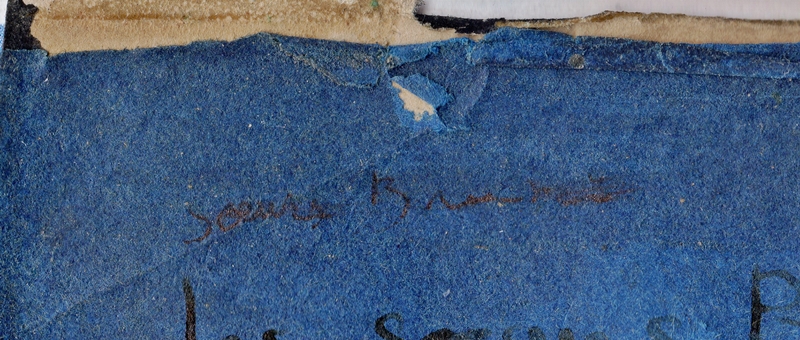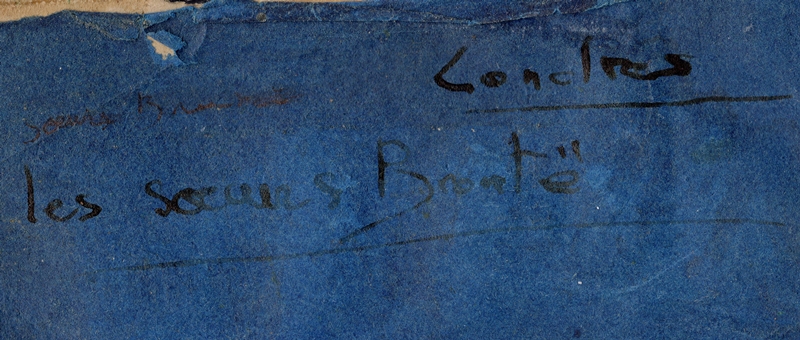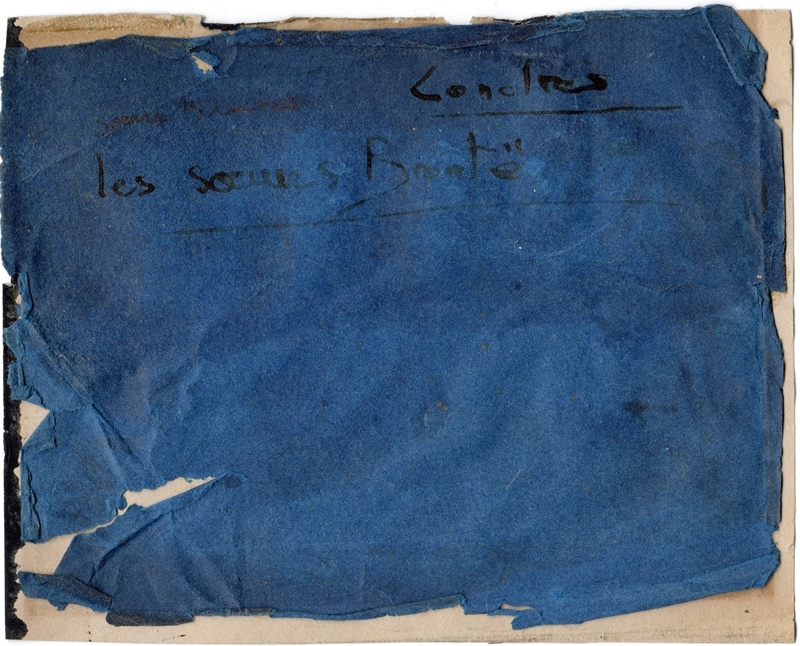|

Detail of the earlier writing on
the backing paper which reads "Soeurs Bronte."
To the top left of the backing paper
the words "Soeurs Bronte" are written in pencil. It has been suggested that this
is was not written by a French hand because of the omission of "Les." Just above and
below this are indistinct marks which may or may not be faded writing, or impressions from
writing.

Detail of the later handwriting on
the backing paper which reads "Londres" and "Les Soeurs
Bronte."
At a later date
someone has written "Londres" and
"Les Soeurs Bronte" in ink but they had difficulty spelling the
word "Soeurs" which again suggests that this wasn't written by a French
person.
If these are the Bronte sisters then
"Londres" (London) will not refer the location as only two sisters
are known to have visited the capital together at any one time. If this is
a copy made by John Stewart of an earlier photo then it would probably be for George
Smith in London. A paper print from this photo may have been in
London in the early 1860s because there are similarities with Frederick Walker's
watercolour, commissioned by George Smith in 1863.

The backing consists of three layers of paper: black, cream and blue.
The earlier writing in pencil is to the top left.
|

